Framework for Improving
Critical Infrastructure Cybersecurity
Version 1.0
National Institute of Standards and Technology
February 12, 2014
�
February 12, 2014
Cybersecurity Framework
Version 1.0
Table of Contents
Executive Summary .........................................................................................................................1
1.0 Framework Introduction .........................................................................................................3
2.0 Framework Basics ...................................................................................................................7
3.0 How to Use the Framework ..................................................................................................13
Appendix A: Framework Core .......................................................................................................18
Appendix B: Glossary ....................................................................................................................37
Appendix C: Acronyms .................................................................................................................39
List of Figures
Figure 1: Framework Core Structure .............................................................................................. 7
Figure 2: Notional Information and Decision Flows within an Organization .............................. 12
List of Tables
Table 1: Function and Category Unique Identifiers ..................................................................... 19
Table 2: Framework Core ............................................................................................................. 20
ii
�
February 12, 2014
Cybersecurity Framework
Version 1.0
Executive Summary
The national and economic security of the United States depends on the reliable functioning of
critical infrastructure. Cybersecurity threats exploit the increased complexity and connectivity of
critical infrastructure systems, placing the Nation’s security, economy, and public safety and
health at risk. Similar to financial and reputational risk, cybersecurity risk affects a company’s
bottom line. It can drive up costs and impact revenue. It can harm an organization’s ability to
innovate and to gain and maintain customers.
To better address these risks, the President issued Executive Order 13636, “Improving Critical
Infrastructure Cybersecurity,” on February 12, 2013, which established that “[i]t is the Policy of
the United States to enhance the security and resilience of the Nation’s critical infrastructure and
to maintain a cyber environment that encourages efficiency, innovation, and economic prosperity
while promoting safety, security, business confidentiality, privacy, and civil liberties.” In
enacting this policy, the Executive Order calls for the development of a voluntary risk-based
Cybersecurity Framework – a set of industry standards and best practices to help organizations
manage cybersecurity risks. The resulting Framework, created through collaboration between
government and the private sector, uses a common language to address and manage
cybersecurity risk in a cost-effective way based on business needs without placing additional
regulatory requirements on businesses.
The Framework focuses on using business drivers to guide cybersecurity activities and
considering cybersecurity risks as part of the organization’s risk management processes. The
Framework consists of three parts: the Framework Core, the Framework Profile, and the
Framework Implementation Tiers. The Framework Core is a set of cybersecurity activities,
outcomes, and informative references that are common across critical infrastructure sectors,
providing the detailed guidance for developing individual organizational Profiles. Through use of
the Profiles, the Framework will help the organization align its cybersecurity activities with its
business requirements, risk tolerances, and resources. The Tiers provide a mechanism for
organizations to view and understand the characteristics of their approach to managing
cybersecurity risk.
The Executive Order also requires that the Framework include a methodology to protect
individual privacy and civil liberties when critical infrastructure organizations conduct
cybersecurity activities. While processes and existing needs will differ, the Framework can assist
organizations in incorporating privacy and civil liberties as part of a comprehensive
cybersecurity program.
The Framework enables organizations – regardless of size, degree of cybersecurity risk, or
cybersecurity sophistication – to apply the principles and best practices of risk management to
improving the security and resilience of critical infrastructure. The Framework provides
organization and structure to today’s multiple approaches to cybersecurity by assembling
standards, guidelines, and practices that are working effectively in industry today. Moreover,
because it references globally recognized standards for cybersecurity, the Framework can also be
1
�
February 12, 2014
Cybersecurity Framework
Version 1.0
used by organizations located outside the United States and can serve as a model for
international cooperation on strengthening critical infrastructure cybersecurity.
The Framework is not a one-size-fits-all approach to managing cybersecurity risk for critical
infrastructure. Organizations will continue to have unique risks – different threats, different
vulnerabilities, different risk tolerances – and how they implement the practices in the
Framework will vary. Organizations can determine activities that are important to critical service
delivery and can prioritize investments to maximize the impact of each dollar spent. Ultimately,
the Framework is aimed at reducing and better managing cybersecurity risks.
The Framework is a living document and will continue to be updated and improved as industry
provides feedback on implementation. As the Framework is put into practice, lessons learned
will be integrated into future versions. This will ensure it is meeting the needs of critical
infrastructure owners and operators in a dynamic and challenging environment of new threats,
risks, and solutions.
Use of this voluntary Framework is the next step to improve the cybersecurity of our Nation’s
critical infrastructure – providing guidance for individual organizations, while increasing the
cybersecurity posture of the Nation’s critical infrastructure as a whole.
2
�
February 12, 2014
Cybersecurity Framework
Version 1.0
1.0 Framework Introduction
The national and economic security of the United States depends on the reliable functioning of
critical infrastructure. To strengthen the resilience of this infrastructure, President Obama issued
Executive Order 13636 (EO), “Improving Critical Infrastructure Cybersecurity,” on February 12,
2013.1 This Executive Order calls for the development of a voluntary Cybersecurity Framework
(“Framework”) that provides a “prioritized, flexible, repeatable, performance-based, and cost-
effective approach” to manage cybersecurity risk for those processes, information, and systems
directly involved in the delivery of critical infrastructure services. The Framework, developed in
collaboration with industry, provides guidance to an organization on managing cybersecurity
risk.
Critical infrastructure is defined in the EO as “systems and assets, whether physical or virtual, so
vital to the United States that the incapacity or destruction of such systems and assets would have
a debilitating impact on security, national economic security, national public health or safety, or
any combination of those matters.” Due to the increasing pressures from external and internal
threats, organizations responsible for critical infrastructure need to have a consistent and iterative
approach to identifying, assessing, and managing cybersecurity risk. This approach is necessary
regardless of an organization’s size, threat exposure, or cybersecurity sophistication today.
The critical infrastructure community includes public and private owners and operators, and
other entities with a role in securing the Nation’s infrastructure. Members of each critical
infrastructure sector perform functions that are supported by information technology (IT) and
industrial control systems (ICS).2 This reliance on technology, communication, and the
interconnectivity of IT and ICS has changed and expanded the potential vulnerabilities and
increased potential risk to operations. For example, as ICS and the data produced in ICS
operations are increasingly used to deliver critical services and support business decisions, the
potential impacts of a cybersecurity incident on an organization’s business, assets, health and
safety of individuals, and the environment should be considered. To manage cybersecurity risks,
a clear understanding of the organization’s business drivers and security considerations specific
to its use of IT and ICS is required. Because each organization’s risk is unique, along with its use
of IT and ICS, the tools and methods used to achieve the outcomes described by the Framework
will vary.
Recognizing the role that the protection of privacy and civil liberties plays in creating greater
public trust, the Executive Order requires that the Framework include a methodology to protect
individual privacy and civil liberties when critical infrastructure organizations conduct
cybersecurity activities. Many organizations already have processes for addressing privacy and
civil liberties. The methodology is designed to complement such processes and provide guidance
to facilitate privacy risk management consistent with an organization’s approach to cybersecurity
risk management. Integrating privacy and cybersecurity can benefit organizations by increasing
customer confidence, enabling more standardized sharing of information, and simplifying
operations across legal regimes.
1 Executive Order no. 13636, Improving Critical Infrastructure Cybersecurity, DCPD-201300091, February 12,
2013. http://www.gpo.gov/fdsys/pkg/FR-2013-02-19/pdf/2013-03915.pdf
2 The DHS Critical Infrastructure program provides a listing of the sectors and their associated critical functions
and value chains. http://www.dhs.gov/critical-infrastructure-sectors
3
�
February 12, 2014
Cybersecurity Framework
Version 1.0
To ensure extensibility and enable technical innovation, the Framework is technology neutral.
The Framework relies on a variety of existing standards, guidelines, and practices to enable
critical infrastructure providers to achieve resilience. By relying on those global standards,
guidelines, and practices developed, managed, and updated by industry, the tools and methods
available to achieve the Framework outcomes will scale across borders, acknowledge the global
nature of cybersecurity risks, and evolve with technological advances and business requirements.
The use of existing and emerging standards will enable economies of scale and drive the
development of effective products, services, and practices that meet identified market needs.
Market competition also promotes faster diffusion of these technologies and practices and
realization of many benefits by the stakeholders in these sectors.
Building from those standards, guidelines, and practices, the Framework provides a common
taxonomy and mechanism for organizations to:
1) Describe their current cybersecurity posture;
2) Describe their target state for cybersecurity;
3) Identify and prioritize opportunities for improvement within the context of a
continuous and repeatable process;
4) Assess progress toward the target state;
5) Communicate among internal and external stakeholders about cybersecurity risk.
The Framework complements, and does not replace, an organization’s risk management process
and cybersecurity program. The organization can use its current processes and leverage the
Framework to identify opportunities to strengthen and communicate its management of
cybersecurity risk while aligning with industry practices. Alternatively, an organization without
an existing cybersecurity program can use the Framework as a reference to establish one.
Just as the Framework is not industry-specific, the common taxonomy of standards, guidelines,
and practices that it provides also is not country-specific. Organizations outside the United States
may also use the Framework to strengthen their own cybersecurity efforts, and the Framework
can contribute to developing a common language for international cooperation on critical
infrastructure cybersecurity.
1.1 Overview of the Fr amework
The Framework is a risk-based approach to managing cybersecurity risk, and is composed of
three parts: the Framework Core, the Framework Implementation Tiers, and the Framework
Profiles. Each Framework component reinforces the connection between business drivers and
cybersecurity activities. These components are explained below.
The Framework Core is a set of cybersecurity activities, desired outcomes, and
applicable references that are common across critical infrastructure sectors. The Core
presents industry standards, guidelines, and practices in a manner that allows for
communication of cybersecurity activities and outcomes across the organization from the
executive level to the implementation/operations level. The Framework Core consists of
five concurrent and continuous Functions—Identify, Protect, Detect, Respond, Recover.
When considered together, these Functions provide a high-level, strategic view of the
lifecycle of an organization’s management of cybersecurity risk. The Framework Core
4
�
February 12, 2014
Cybersecurity Framework
Version 1.0
then identifies underlying key Categories and Subcategories for each Function, and
matches them with example Informative References such as existing standards,
guidelines, and practices for each Subcategory.
Framework Implementation Tiers (“Tiers”) provide context on how an organization
views cybersecurity risk and the processes in place to manage that risk. Tiers describe the
degree to which an organization’s cybersecurity risk management practices exhibit the
characteristics defined in the Framework (e.g., risk and threat aware, repeatable, and
adaptive). The Tiers characterize an organization’s practices over a range, from Partial
(Tier 1) to Adaptive (Tier 4). These Tiers reflect a progression from informal, reactive
responses to approaches that are agile and risk-informed. During the Tier selection
process, an organization should consider its current risk management practices, threat
environment, legal and regulatory requirements, business/mission objectives, and
organizational constraints.
A Framework Profile (“Profile”) represents the outcomes based on business needs that an
organization has selected from the Framework Categories and Subcategories. The Profile
can be characterized as the alignment of standards, guidelines, and practices to the
Framework Core in a particular implementation scenario. Profiles can be used to identify
opportunities for improving cybersecurity posture by comparing a “Current” Profile (the
“as is” state) with a “Target” Profile (the “to be” state). To develop a Profile, an
organization can review all of the Categories and Subcategories and, based on business
drivers and a risk assessment, determine which are most important; they can add
Categories and Subcategories as needed to address the organization’s risks. The Current
Profile can then be used to support prioritization and measurement of progress toward the
Target Profile, while factoring in other business needs including cost-effectiveness and
innovation. Profiles can be used to conduct self-assessments and communicate within an
organization or between organizations.
1.2 Risk Manageme nt and the Cybersec urity Framework
Risk management is the ongoing process of identifying, assessing, and responding to risk. To
manage risk, organizations should understand the likelihood that an event will occur and the
resulting impact. With this information, organizations can determine the acceptable level of risk
for delivery of services and can express this as their risk tolerance.
With an understanding of risk tolerance, organizations can prioritize cybersecurity activities,
enabling organizations to make informed decisions about cybersecurity expenditures.
Implementation of risk management programs offers organizations the ability to quantify and
communicate adjustments to their cybersecurity programs. Organizations may choose to handle
risk in different ways, including mitigating the risk, transferring the risk, avoiding the risk, or
accepting the risk, depending on the potential impact to the delivery of critical services.
The Framework uses risk management processes to enable organizations to inform and prioritize
decisions regarding cybersecurity. It supports recurring risk assessments and validation of
business drivers to help organizations select target states for cybersecurity activities that reflect
desired outcomes. Thus, the Framework gives organizations the ability to dynamically select and
direct improvement in cybersecurity risk management for the IT and ICS environments.
5
�
February 12, 2014
Cybersecurity Framework
Version 1.0
The Framework is adaptive to provide a flexible and risk-based implementation that can be used
with a broad array of cybersecurity risk management processes. Examples of cybersecurity risk
management processes include International Organization for Standardization (ISO)
31000:20093, ISO/IEC 27005:20114, National Institute of Standards and Technology (NIST)
Special Publication (SP) 800-395, and the Electricity Subsector Cybersecurity Risk Management
Process (RMP) guideline6.
1.3 Docume nt Overview
The remainder of this document contains the following sections and appendices:
Section 2 describes the Framework components: the Framework Core, the Tiers, and the
Profiles.
Section 3 presents examples of how the Framework can be used.
Appendix A presents the Framework Core in a tabular format: the Functions, Categories,
Subcategories, and Informative References.
Appendix B contains a glossary of selected terms.
Appendix C lists acronyms used in this document.
3 International Organization for Standardization, Risk management – Principles and guidelines, ISO 31000:2009,
2009. http://www.iso.org/iso/home/standards/iso31000.htm
4 International Organization for Standardization/International Electrotechnical Commission, Information
technology – Security techniques – Information security risk management, ISO/IEC 27005:2011, 2011.
http://www.iso.org/iso/catalogue_detail?csnumber=56742
5 Joint Task Force Transformation Initiative, Managing Information Security Risk: Organization, Mission, and
Information System View, NIST Special Publication 800-39, March 2011.
http://csrc.nist.gov/publications/nistpubs/800-39/SP800-39-final.pdf
6 U.S. Department of Energy, Electricity Subsector Cybersecurity Risk Management Process, DOE/OE-0003, May
2012. http://energy.gov/sites/prod/files/Cybersecurity%20Risk%20Management%20Process%20Guideline%20-
%20Final%20-%20May%202012.pdf
6
�
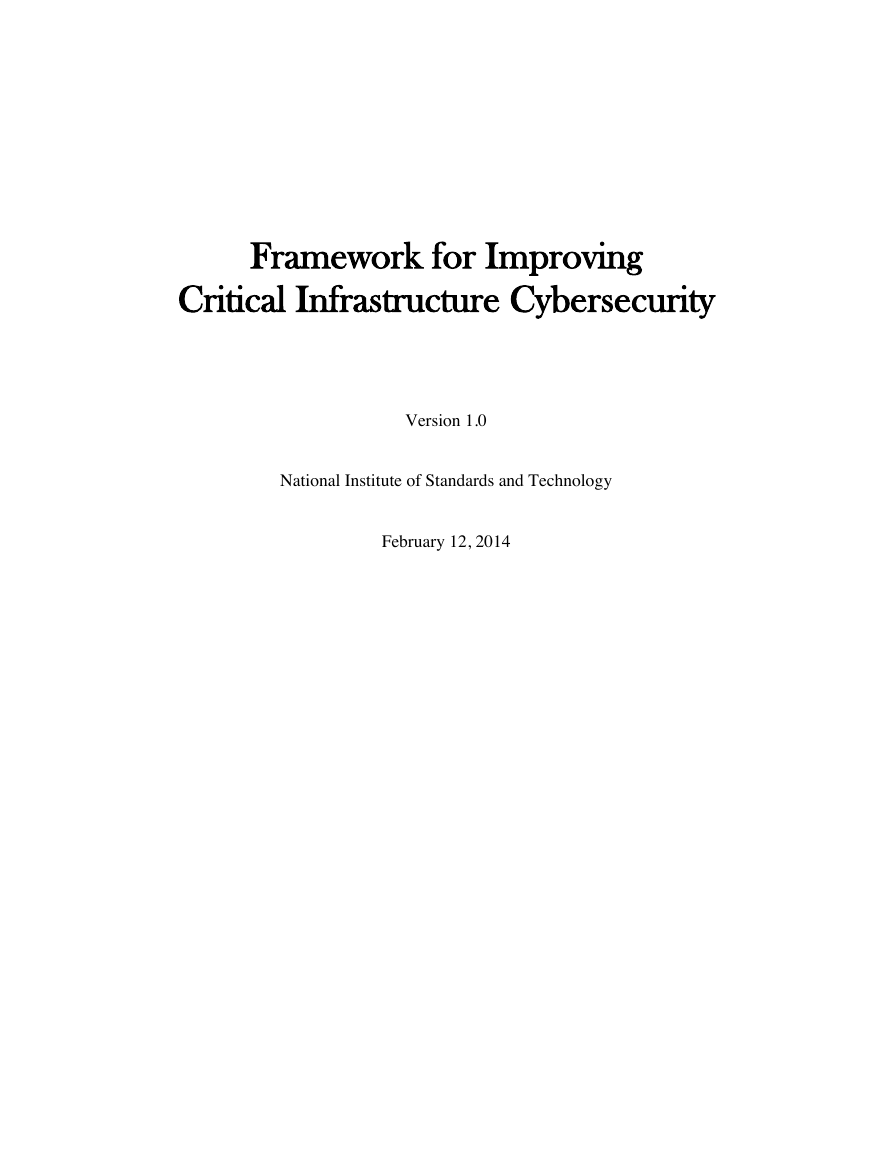
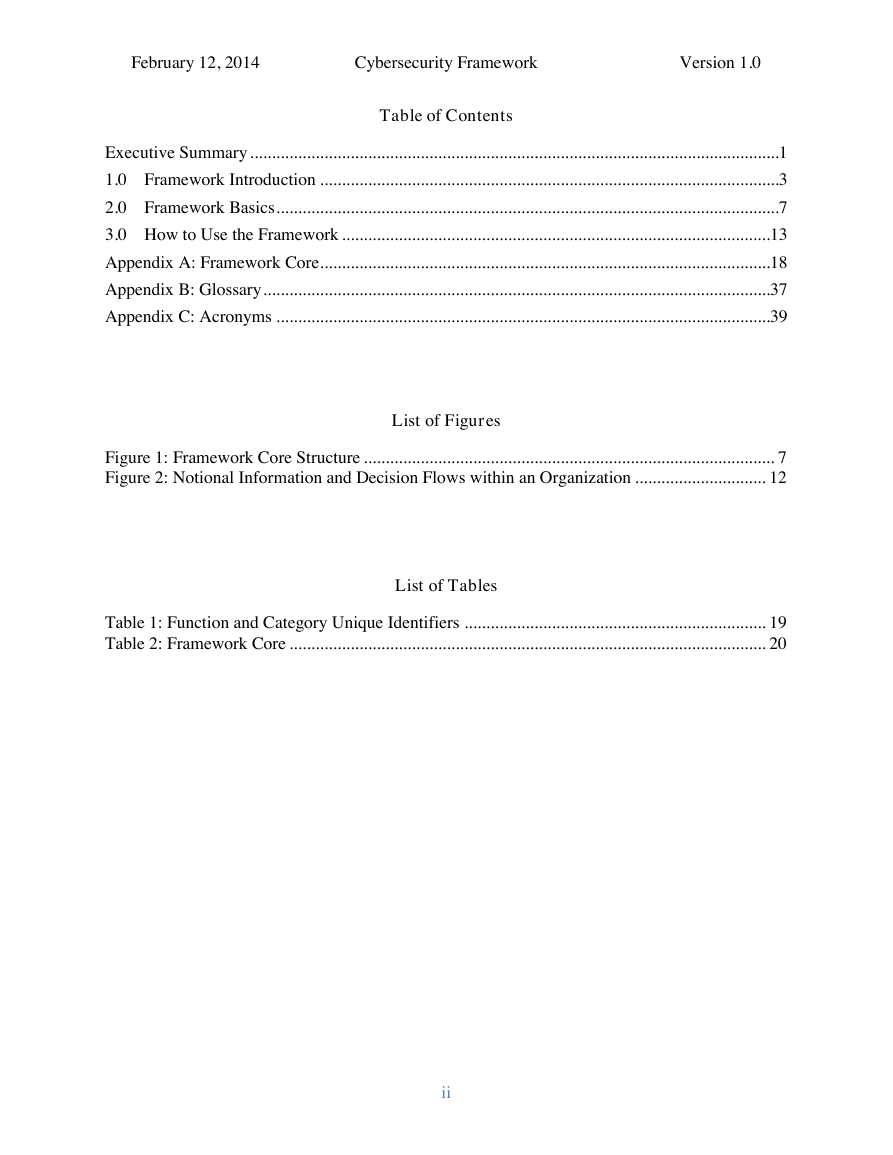
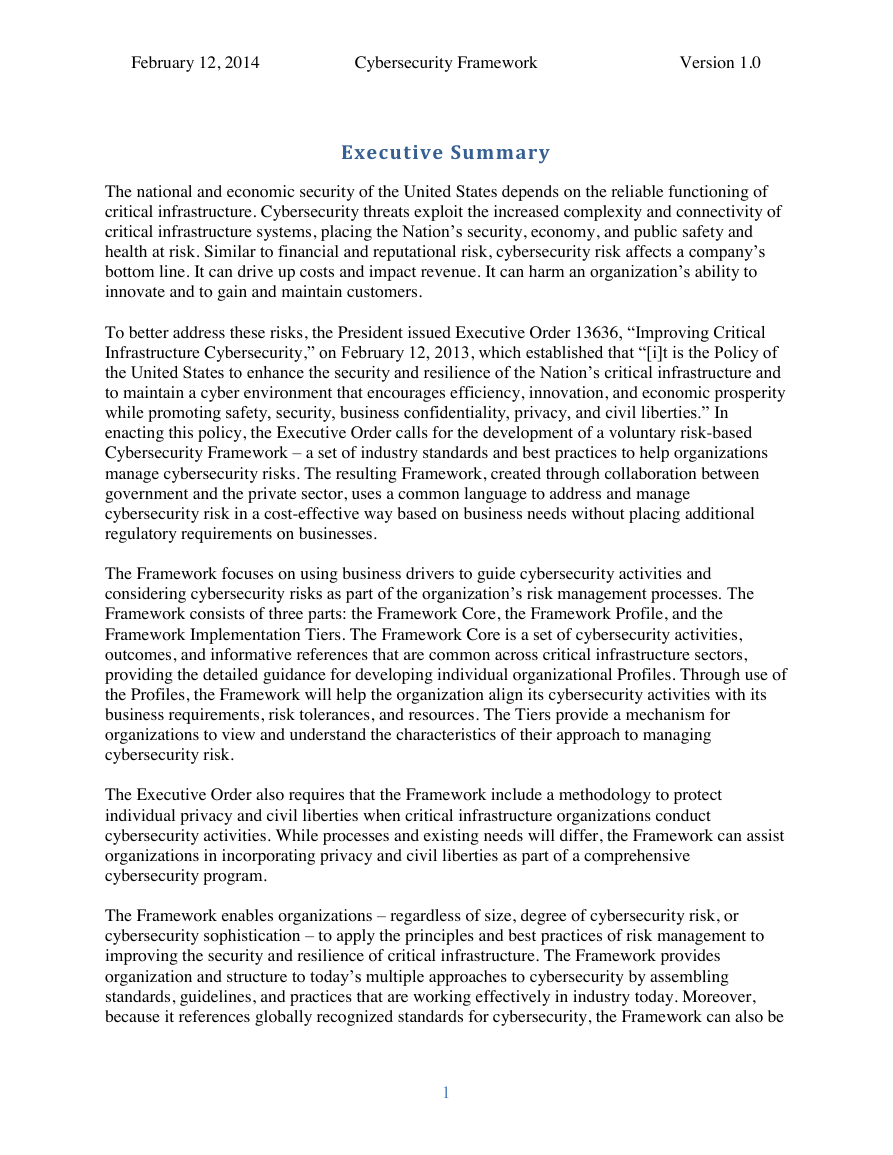
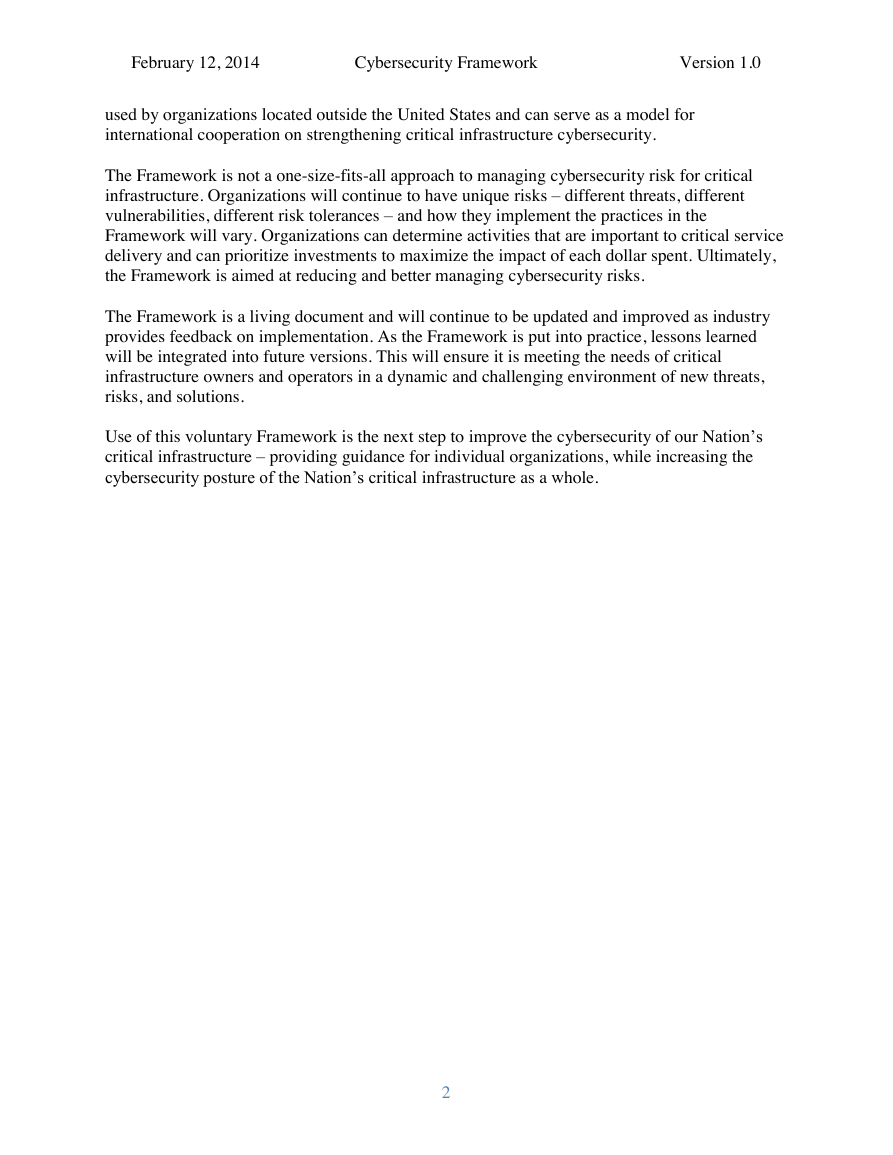
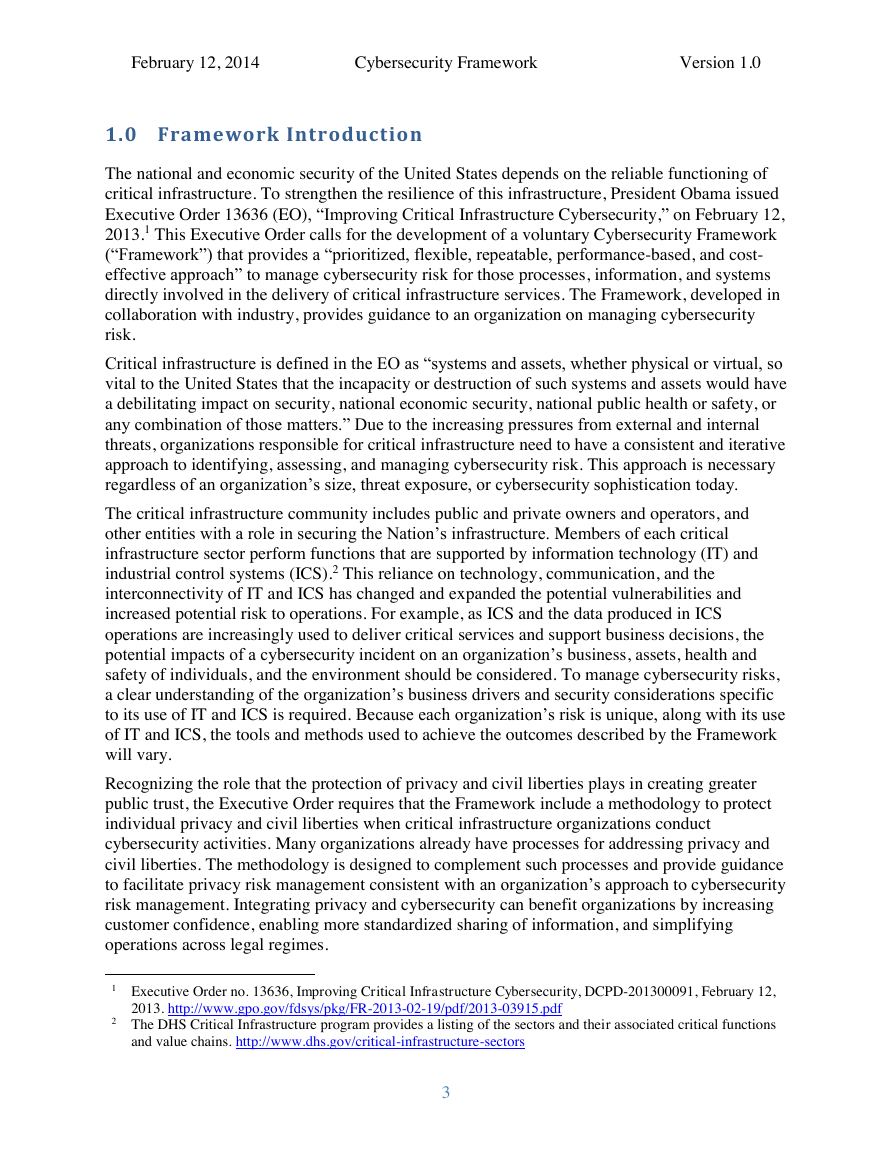
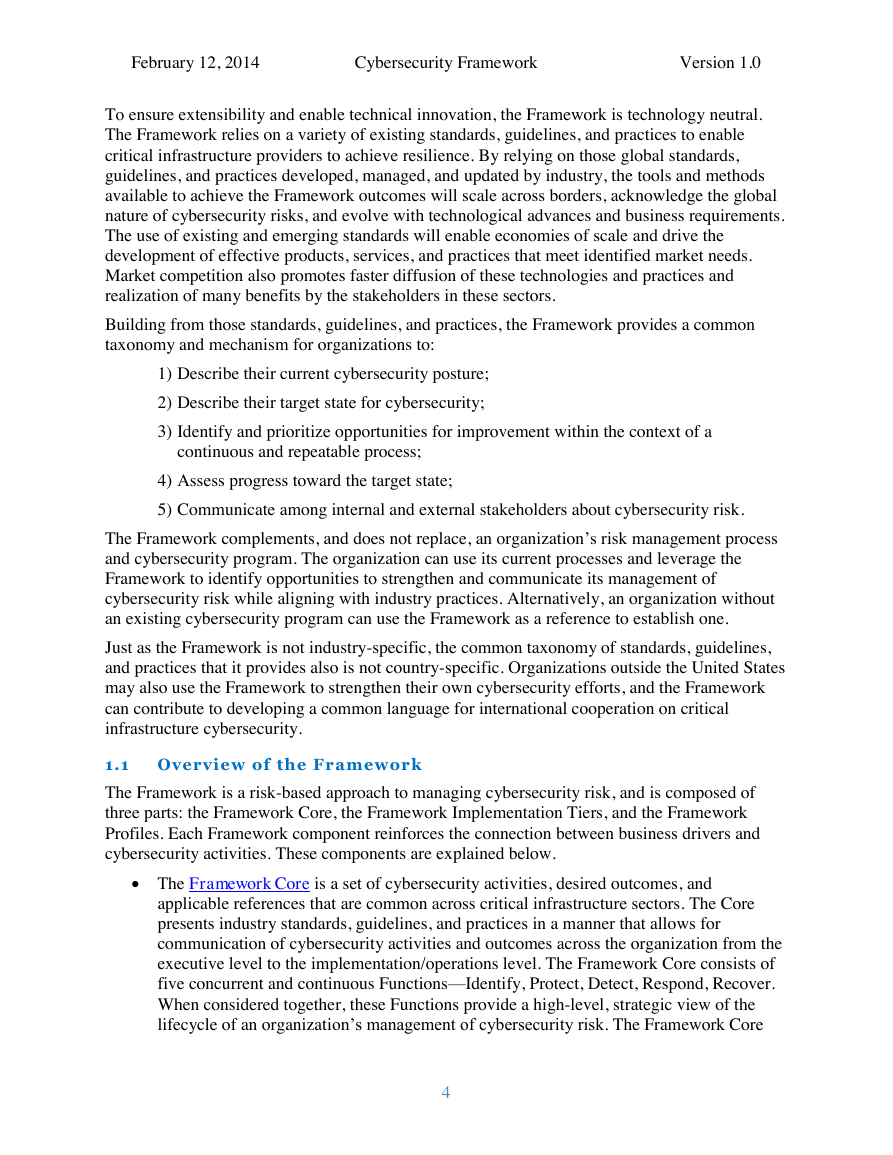
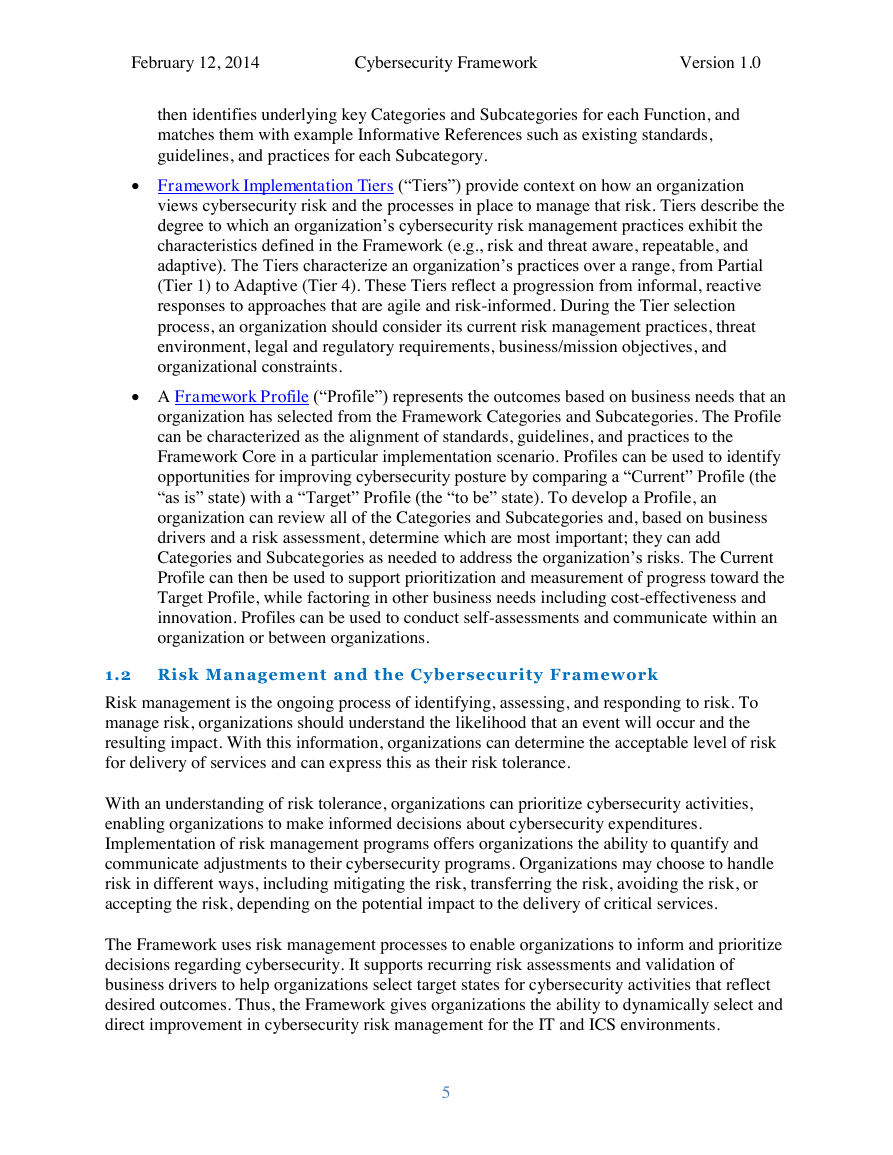
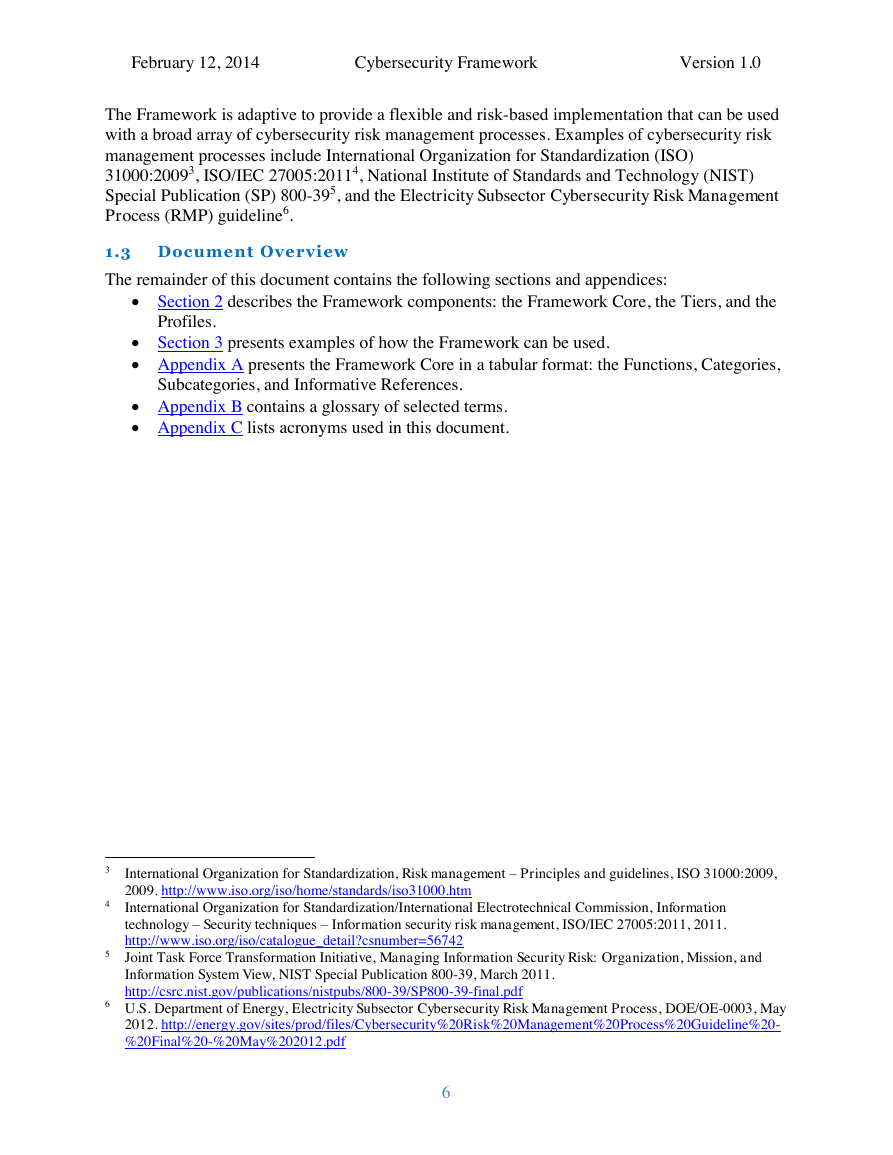








 2023年江西萍乡中考道德与法治真题及答案.doc
2023年江西萍乡中考道德与法治真题及答案.doc 2012年重庆南川中考生物真题及答案.doc
2012年重庆南川中考生物真题及答案.doc 2013年江西师范大学地理学综合及文艺理论基础考研真题.doc
2013年江西师范大学地理学综合及文艺理论基础考研真题.doc 2020年四川甘孜小升初语文真题及答案I卷.doc
2020年四川甘孜小升初语文真题及答案I卷.doc 2020年注册岩土工程师专业基础考试真题及答案.doc
2020年注册岩土工程师专业基础考试真题及答案.doc 2023-2024学年福建省厦门市九年级上学期数学月考试题及答案.doc
2023-2024学年福建省厦门市九年级上学期数学月考试题及答案.doc 2021-2022学年辽宁省沈阳市大东区九年级上学期语文期末试题及答案.doc
2021-2022学年辽宁省沈阳市大东区九年级上学期语文期末试题及答案.doc 2022-2023学年北京东城区初三第一学期物理期末试卷及答案.doc
2022-2023学年北京东城区初三第一学期物理期末试卷及答案.doc 2018上半年江西教师资格初中地理学科知识与教学能力真题及答案.doc
2018上半年江西教师资格初中地理学科知识与教学能力真题及答案.doc 2012年河北国家公务员申论考试真题及答案-省级.doc
2012年河北国家公务员申论考试真题及答案-省级.doc 2020-2021学年江苏省扬州市江都区邵樊片九年级上学期数学第一次质量检测试题及答案.doc
2020-2021学年江苏省扬州市江都区邵樊片九年级上学期数学第一次质量检测试题及答案.doc 2022下半年黑龙江教师资格证中学综合素质真题及答案.doc
2022下半年黑龙江教师资格证中学综合素质真题及答案.doc